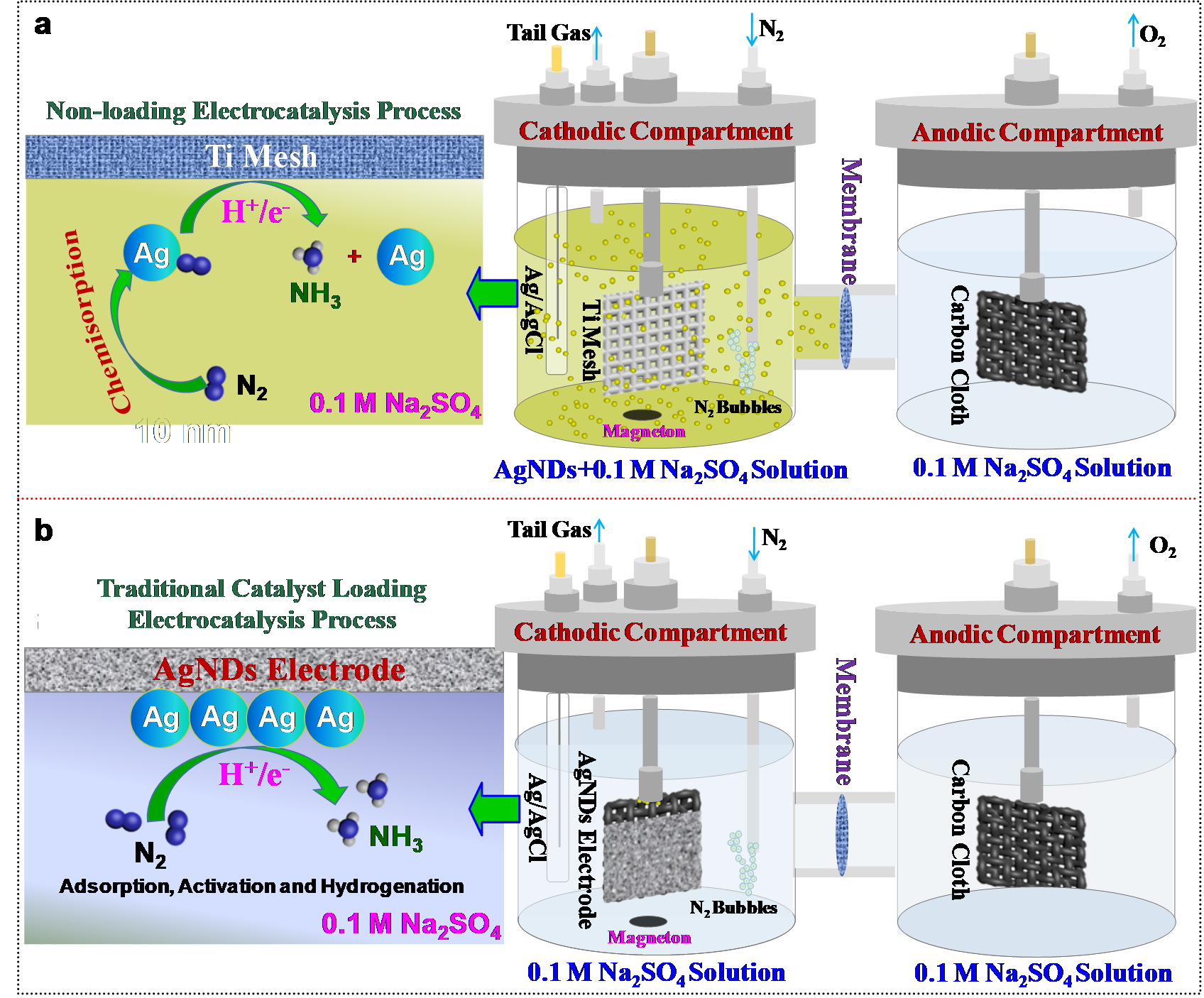
It's commonly known that the electrocatalytic nitrogen (N2) reduction reaction (NRR) can convert N2 and H2O into Ammonia (NH3), one of the most essential chemicals in ecological system. With renewable electricity under mild conditions, it’s envisaged as a promising strategy to replace the industrial Haber-Bosch process. However, this method is still far away from the practical application because the developed NRR electrocatalysts and electrocatalysis system possess low NH3 yield and current efficiency.
Recently, researchers led by Prof. ZHANG Haimin from the Institute of Solid State Physics (ISSP), Hefei Institutes of Physical Science (HFIPS), reported their new findings about a non-loading electrocatalysis system, which paved a way for ambient electrocatalytic NRR.
Differing from previous research that loading catalyst onto substrate, they dispersed aqueous Ag nanodots (AgNDs) catalyst on electrolyte and using metallic titanium (Ti) mesh as the current collectorfor electrocatalytic NRR.
In this novel system, the aqueous AgNDs with abundant catalytic active sites can effectively chemisorb the dissolved N2 molecules in electrolyte, then transfer to the Ti mesh current collector under stirring to accept the H+/e- attack for NH3 formation and concurrently regenerate the AgNDs.
"Our goal is to construct a non-loading electrocatalysis system," said LI Wenyi, a student who conducted the research, "Lab of Laser Fabrication in Liquid of ISSP offered a good platform. We fabricated highly dispersed AgNDs in aqueous solution using the laser-ablation technique."
The team thinks the system is helpful to overcome the disadvantages of conventional catalyst-loading electrocatalysis process.
"We are interested to find that the NRR performance can be further enhanced by simple modification of the metallic Ti mesh current collector.” said LI Wenyi, "It takes full advantage of the catalytic active sites provided by Ag nanodots with highly exposed (111) planes for N2 adsorption and activation."
In addition, a two-electrode configured flow-type electrochemical reactor was also designed and evaluated for the NRR.
Their work provided a significant guidance on designing high-efficiency electrocatalysts and electrocatalysis systems for ambient NH3 electrosynthesis.
Link to paper: Efficient electrocatalytic nitrogen reduction to ammonia with aqueous silver nanodots

Fig. Schematic illustration of a. the non-loading NRR electrocatalysis process and b. the traditional catalyst-loading electrocatalysis process. (Image by LI Wenyi)
Contact:
ZHAO Weiwei
Hefei Institutes of Physical Science (http://english.hf.cas.cn/)
Email: annyzhao@ipp.ac.cn